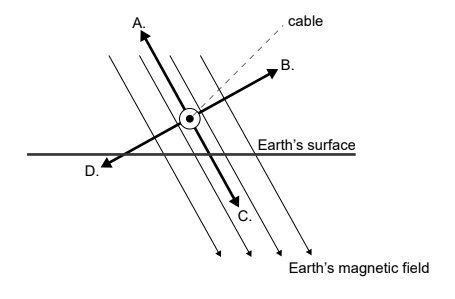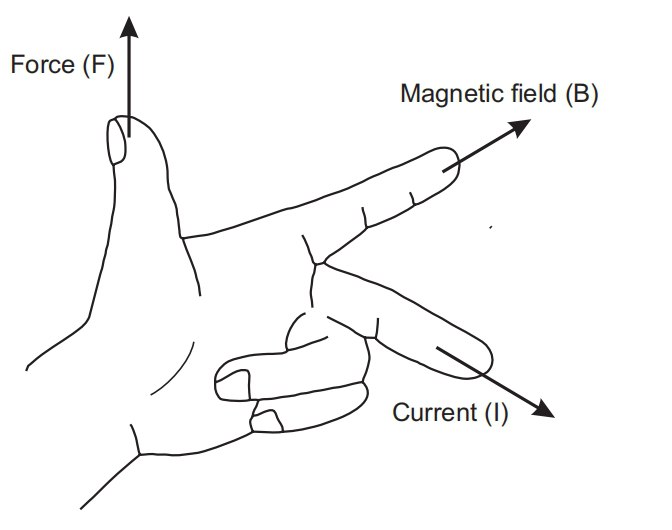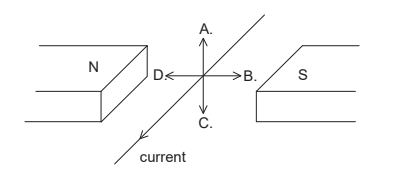Question
An electron enters a region of uniform magnetic field at a speed v. The direction of the electron is perpendicular to the magnetic field. The path of the electron inside the magnetic field is circular with radius r.

The speed of the electron is varied to obtain different values of r.
Which graph represents the variation of speed v with r?

▶️Answer/Explanation
Ans:A
When an electron enters a region of a uniform magnetic field with a velocity perpendicular to the magnetic field lines, it experiences a magnetic force that acts as a centripetal force, causing the electron to move in a circular path. This is due to the interaction of the magnetic field with the moving charge of the electron.
The magnetic force (\(F_{\text{mag}}\)) on the electron is given by:
\[F_{\text{mag}} = qvB\]
This magnetic force provides the centripetal force required to keep the electron in a circular path. The centripetal force (\(F_{\text{cent}}\)) for an object moving in a circle of radius \(r\) with speed \(v\) is given by:
\[F_{\text{cent}} = \frac{mv^2}{r}\]
Since the magnetic force is acting as the centripetal force, we can equate the two expressions:
\[qvB = \frac{mv^2}{r}\]
Now, we can solve for the radius (\(r\)) of the circular path:
\[r = \frac{mv}{qB}\]
So, as the speed of the electron (\(v\)) is varied, the radius of the circular path (\(r\)) will change accordingly. The greater the speed, the larger the radius of the circular path, and vice versa. This relationship shows that the radius of the circular path is directly proportional to the speed of the electron, provided that the magnetic field strength and the charge of the electron remain constant.
Question
A negatively charged sphere is falling through a magnetic field.

What is the direction of the magnetic force acting on the sphere?
A. To the left of the page
B. To the right of the page
C. Out of the page
D. Into the page
▶️Answer/Explanation
Ans:D
Current I will be opposite to flow of electron and magnetic field will be from north to south pole,

FLEMING’S LEFT HAND RULE
Fleming’s left hand rule states that, when \(u\) keep the thumb, index finger and middle finger of the left hand right angle to each other, if the middle finger shows the direction of current, index finger shows the direction of magnetic field, then the thumb will show the direction of motion. This law explains the working of a DC motor.

From this , magnetic force acting on the sphere is acting Into the page
Question
A horizontal electrical cable carries a steady current out of the page. The Earth’s magnetic field exerts a force on the cable.
Which arrow shows the direction of the force on the cable due to the Earth’s magnetic field?

Answer/Explanation
Answer – B
Fleming’s left hand rule is used to find the direction of force acting on a current carrying conductor, placed in a magnetic field.

Question
A current in a wire lies between the poles of a magnet. What is the direction of the electromagnetic force on the wire?

Answer/Explanation
Answer – A
According to Fleming’s left hand rule,direction of magnetic field is from north to south, and current
In shown direction and when we apply Fleming left hand Direction of force will come out A
A current carrying wire is in the same plane as a uniform magnetic field. The angle between the wire and the magnetic field is \(\theta \).

The magnetic force on the current carrying wire is
A. zero.
B. into the plane of the paper.
C. out of the plane of the paper.
D. at an angle \(\theta \) to the direction of the magnetic field.
Answer/Explanation
Answer – B
By Fleming left hand rule direction of magnetic force will be into the plane
